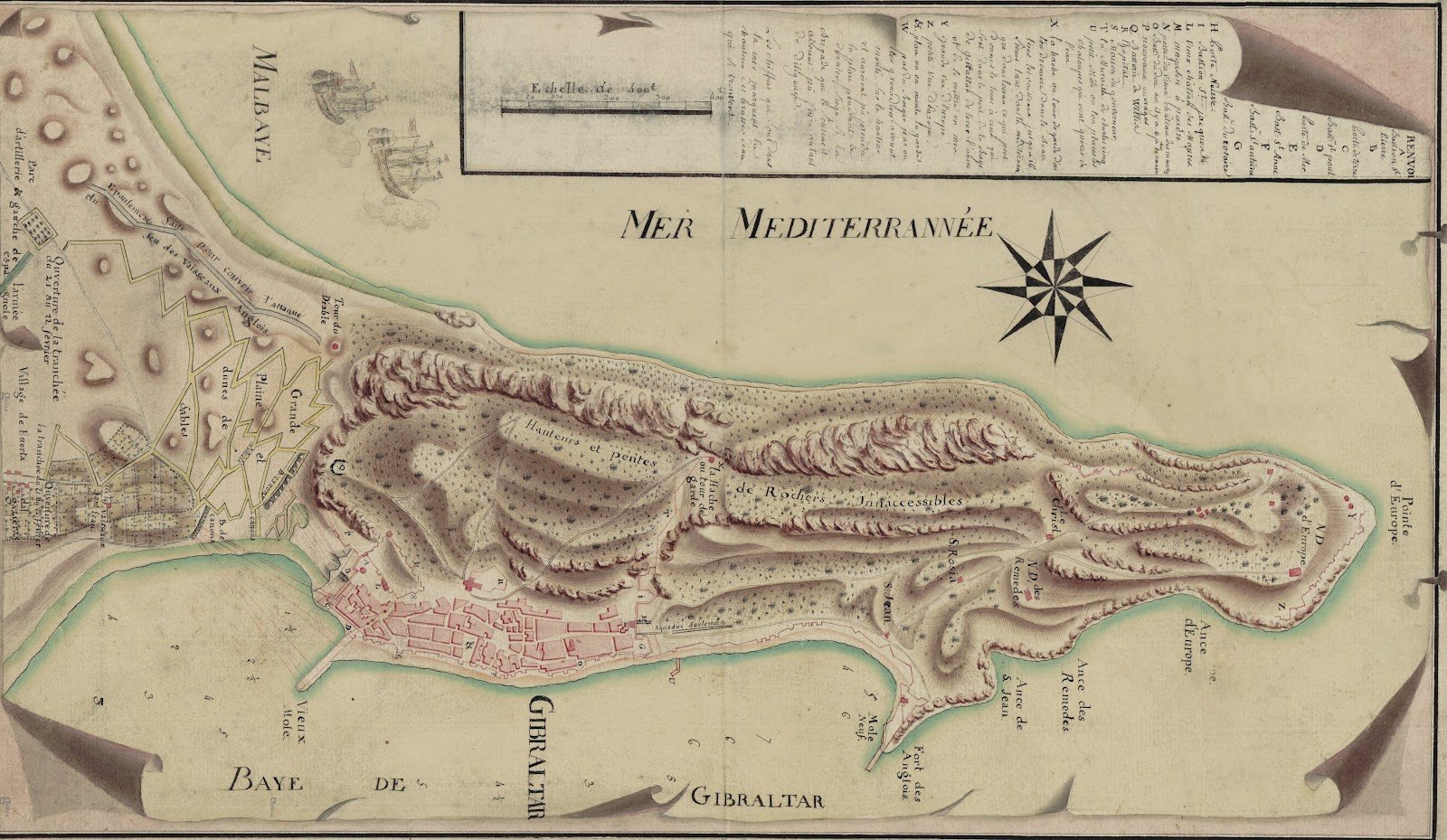Sunday, April 2. In a public statement, Spanish Foreign Minister Dastis says that the European Union can no longer consider the question of Gibraltar as a strictly Spanish-British conflict. With Brexit, one of the two sides of the conflict is to give up its status as an EU partner, a factor which should garner more than enough complicity of the European Union on the Spanish complaint of Gibraltar. The reply is soon to come, not from Brussels, but from London. Premier Theresa May and her government give warning that they will defend British sovereignty of the rock, with arms if necessary. And Norman Tebbit, an influential opinion-leader who had been Chairman of the Conservative Party warns the Spaniards —from his column in The Telegraph— that the claim to Gibraltar will reopen the “Case of the Catalans” and a revision of The Treaty of Utrecht of 1713. Gibraltar and Catalonia find themselves once more at the forefront of the European agenda.
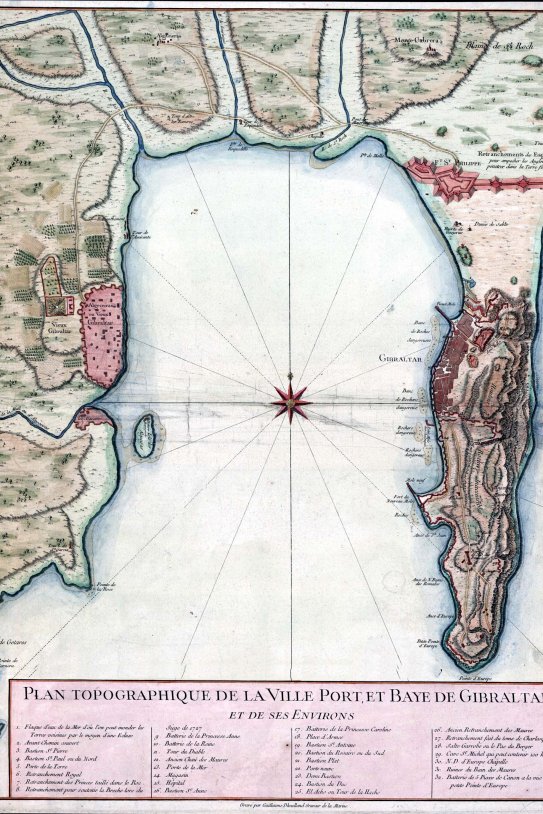
French map of Gibraltar, 1733
Catalan Bay
At the foot of the rock of Gibraltar there is a beach called Catalan Bay, named and signposted strictly in English. A picturesque curiosity that has nothing to do with the cheapo Catalan Rumba-budget tourism pairing. Despite being an important tourist attraction, Catalan Bay owes its name to a historical event, one that marks the beginning of the modern-day relationship between Catalonia and Gibraltar. In 1704, over three centuries ago, the War of Spanish Succession had already broken out, facing off the Bourbons and the Habsburgs. Which meant the Crown of Castile versus the Crown of Aragon, for the dominion of the Hispanic imperial construct. It also means France and Castilian Spain versus Europe. Gibraltar, a strategic stronghold of the first order, became a priority objective of the anti-Bourbon allies. Naval powers England and Holland could not conceive war without the control of the seas.
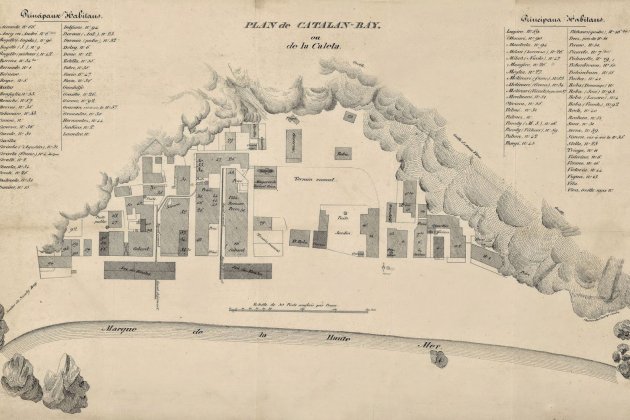
La Catalan Bay,en un plànol del 1830
La senyera de Gibraltar
On August 4, 1704, an allied naval squadron commanded by Englishman George Rooke, who had destroyed the Spanish treasure fleet in Vigo Bay in NW Spain, and by German George of Hesse-Darmstadt, who had been Viceroy of Catalonia for the last Spanish Habsburg, bombarded the Gibraltar station to extenuation—from the west. At the same time, a company of 400 Catalan, Valencian and Majorcan naval infantry troops, led by Valencian Joan-Baptista Basset —who would be one of the heroes of the Siege of Barcelona in 1714— disembarked on the eastern side of the Rock with hardly any opposition and took the defences of the fortress from behind. The Basset marines —who fought on behalf of the Habsburg pretender, which meant a confederal Spanish project— momentously raised the Catalan four-barred ensign on the beach of La Caleta, which from that moment on would be known as Catalan Bay.
Allied occupation
The London government was very clear that Gibraltar was not just another military operation. Hesse —the German— occupied the Rock in the name of the Habsburg pretender, and guaranteed the Spaniards of Gibraltar their lives and their goods —a habitual recourse of the time— in exchange for surrendering the place —another recurring protocol— and to swear allegiance to the Austrian monarch. But Rooke —the Englishman— had other plans. The English soldiers —ordered to carry out Rooke’s the shady manoeuvre— sacrificed Hesse’s promises and sacked the Rock’s church buildings. Basset's marines intervened to stop the sacrilegious orgy, but it was too late and the Spanish Gibraltarians, frightened by the British excesses and abandoned by the Spanish authorities, fled to found the modern towns of La Línea and San Roque. Obviously, until the conflict was solved at the negotiation tables of Utrecht, the Rock was no more than a huge military barracks..
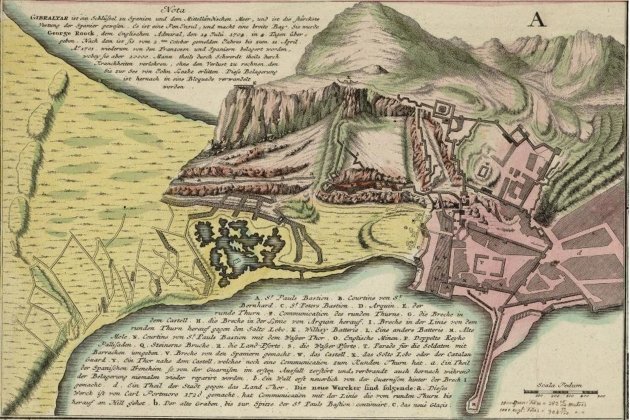
Gibraltar el 1750
The new Gibraltarians
The Bourbon king gave Gibraltar away to the British willingly and accepting all its consequences. At the negotiation table in Utrecht he foresook Gibraltar in exchange for the British withdrawing military support for the Catalans. As a result, the London government considered it necessary to create a stable population that would confirm sovereignty in anticipation of future claims. The Maltese, Genoese and Minorcan answered the call of the London government to repopulate with very favourable conditions the colony —now with that rank— of Gibraltar, a British overseas territory. Meanwhile the first Britons, besides the public servants of course, arrived later. They would be, curiously, a group from the Sephardic community —descendants of Hispanic Jews— from London. Together, they created a new social, political, cultural and economic reality that had no connection with the old Castilian Gibraltarians, nor with the new Spain of Bourbon manufacture.
The Gibraltarian riddle
During the 1700s and 1800s, Gibraltar was a cultural riddle—a place of freedom contrasting with the atavistic, monolithic ideology of Bourbon Spain. The English language —that of the administration— coexisted with the Ligurian, Maltese and Catalan of the streets and squares of the colony, while it is also true that the English —purposely raised to the alleged category of language of civilisation— would gradually truncate them and provoke their disappearance. All within the space of little more than 6 square kilometres—equivalent to that of the old Town of Gràcia in Barcelona. A space that has been, historically, the ridiculous barter item for Spanish nationalism and a recurring pretext for the governments of Madrid before social contestation. With Brexit, Gibraltar has become an uncomfortable piece in a larger puzzle: the European Union. The question is what role will the Catalans play. Because we were once a barter item on one occasion: Utrecht, 1713. Then, some of them —the British— sold us out, and others —the Spaniards— bought us up. As if they were dealing in slaves.
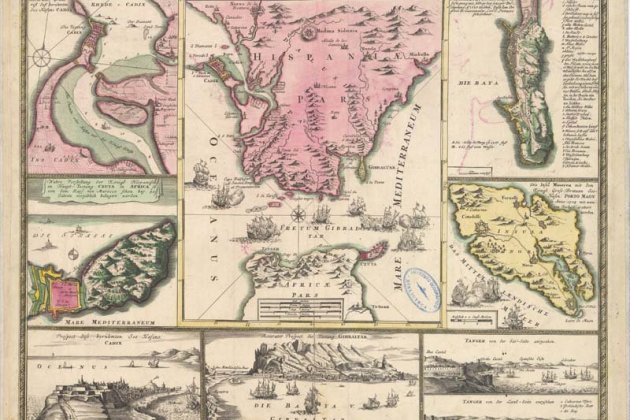
Gibraltar el 1730

